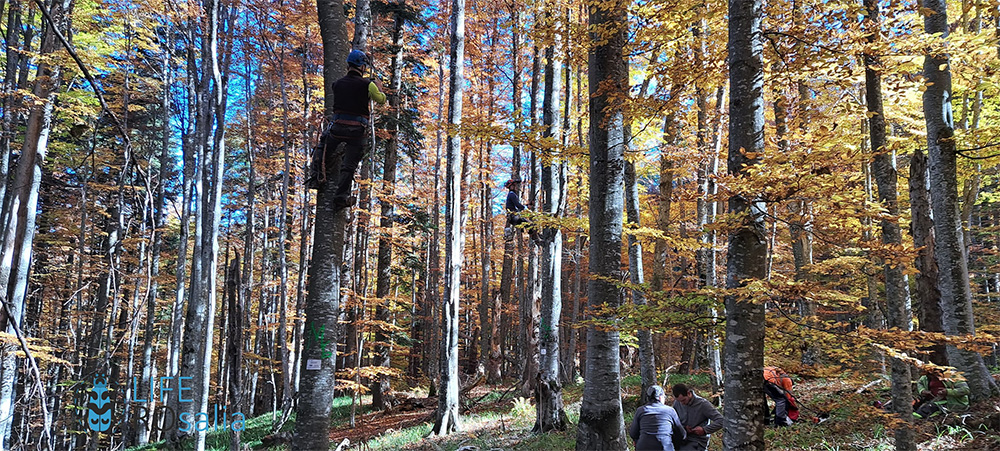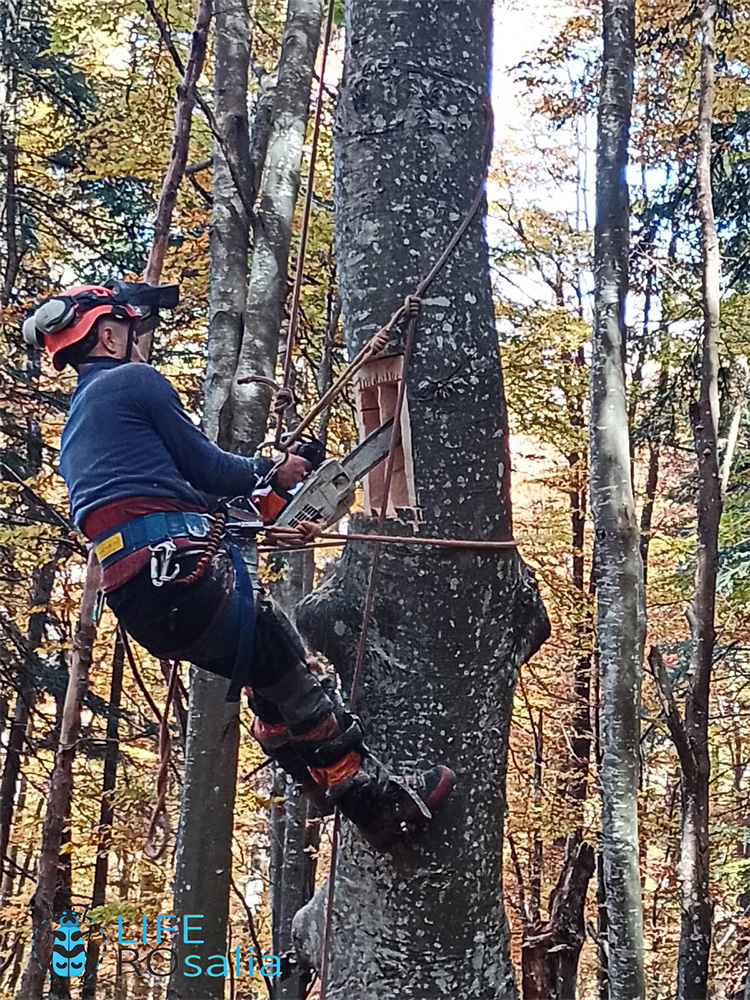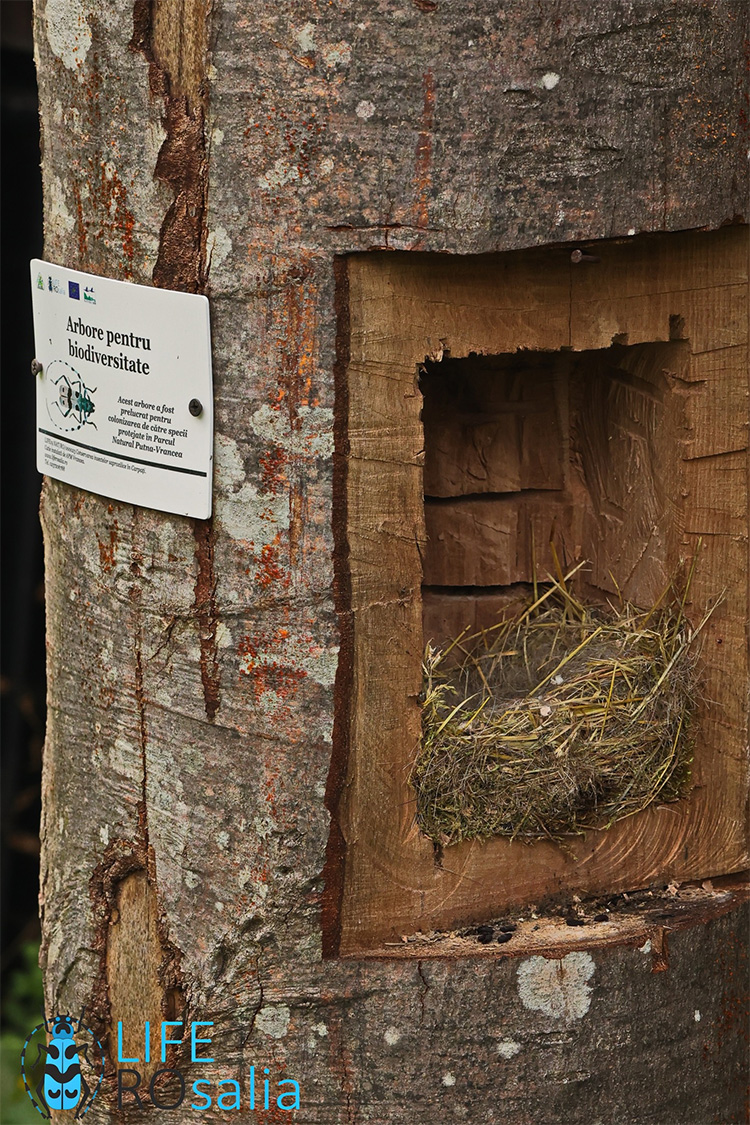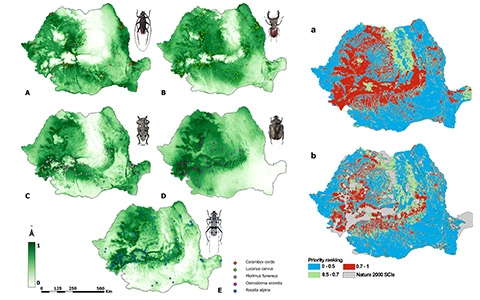Tree veteranization – we use TOOLS instead of TIME!
Veteranization is a method by which some trees are actively processed to create microhabitats (cavities, cracks, barkless surfaces, etc.) for organisms normally associated with older trees.

The idea behind weatherization is to try to imitate nature, using tools, innovation and research. The techniques used do not aim to kill the trees, but only to encourage the process of partial decomposition of the wood in certain small portions in the living trees, the aim being thus to shorten the formation time of some habitats found only in the old trees.
The trees veteranized by us cannot be a replacement for old trees that have gone through the natural aging process, but they can provide a bridge, an age gap, and help reduce the risk of extinction of saproxylic insect species and other related groups of organisms to such habitats, because many sites with old trees are small and fragmented.

In order to accelerate the formation of habitats with dead wood and to reduce habitat fragmentation, we foresee the creation of veteran-like trees and sundried stubs in 22 intervention areas from Putna Vrancea Natura 2000 site. Each target tree will veteranized by:
– Ring barking one or two large sun-exposed branches. This process will allow rot to develop and create habitats for longicorn beetles (Rosalia alpina*).
– Creating a cavity at the upper part of the tree trunk, large enough to host woodpeckers and bats. This activity will initiate a decaying process and create habitats for longicorn and hermit beetles (Rosalia alpina*, Osmoderma eremita*, Cerambyx cerdo).
– Damaging the bark at the base and upper part of the tree in order to induce decay and simulate sap run (creating scar tissue and loose bark). This activity will create microhabitats for longicorn, hermit and stag beetles (Rosalia alpina*, Morimus funereus, Cerambyx cerdo, Osmoderma eremita*, Lucanus cervus).
– Drilling small holes in large branches to increase water retention (holes in the upper part of branches). This operation will primarily create microhabitats for hermit beetle (Osmoderma eremita*).
In order to increase the area of breeding habitats for Rosalia alpina, we also process sun-exposed snags in each intervention area by cutting the dead trees to the foot 2-3 meters above the ground and the top of the sun-exposed snags is cut irregularly to allow water to infiltrate into the trunk.

The aim of the project is to stop and reverse the tendency of habitat loss of saproxylic coleopteran species with areas in the Carpathians protected by the Habitats Directive (Rosalia alpina*, Osmoderma eremita*, Cerambyx cerdo, Morimus funereus and Lucanus cervus), by demonstrating conservation actions to increase the connectivity of favorable habitats in the Putna-Vrancea Natural Park and replicating the most suitable activities in other Natura 2000 sites in Romania.
LIFE ROsalia is implemented by a consortium made up of the Vrancea Environmental Protection Agency (coordinating beneficiary), the University of Bucharest – Center for Environmental Research and Impact Studies, RNP Romsilva – Putna Vrancea Natural Park and the Association for the Conservation of Biological Diversity – ACDB (associated beneficiaries) .
The veteranization activity is carried out by the best specialists in arboriculture from arborist.ro who thoroughly combine knowledge related to trees with a lot of courage and utilitarian climbing skills






